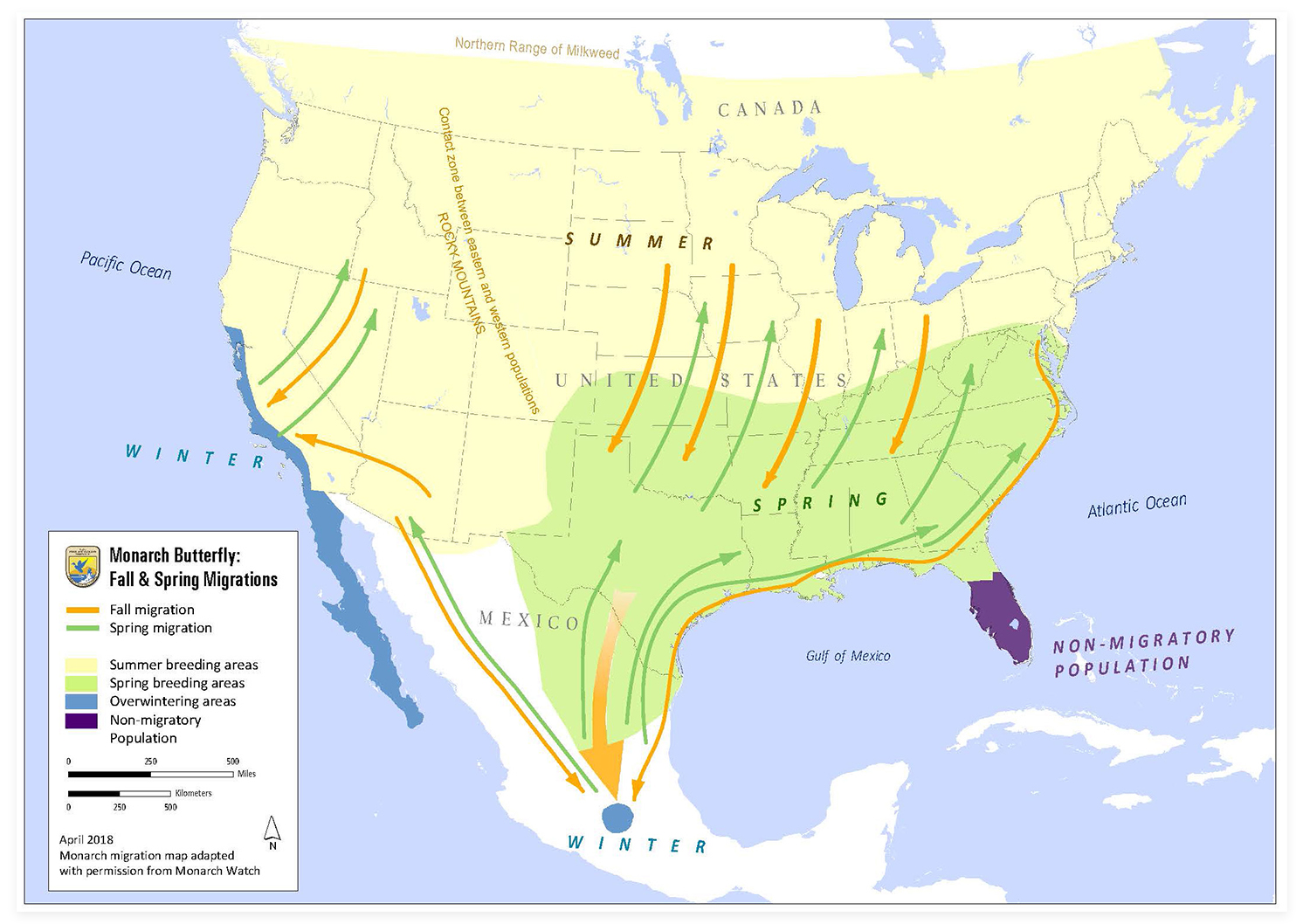Just Fluttering Through
Just Fluttering Through: In September and October, the orange-hued monarch butterfly visits Western North Carolina

This autumn, millions of Eastern monarch butterflies will pass through the Asheville area on their annual migration to Mexico from the upper regions of North America, a journey that can take them more than 2,500 miles, or 50-100 miles per day.

A monarch’s wingspan is only 4 inches long when fully grown, and only weighs .5 grams, which is lighter than a paperclip. They also fly at approximately 7 miles per hour.

Although their current population is in the millions, Eastern Monarch butterflies are classified as an endangered species. Since the ’70s and ’80s, the population has declined by nearly 80%.
Many scientists estimate that at one time the species reached a population of around one billion. The decline is attributed to a loss of habitat, as flutters of monarchs can only lay eggs on the milkweed plant, which is particularly vulnerable to pesticides.

Monarchs fly at high elevations—look for them at an elevation of around 2400 feet. Some of the best places to see these fluttering insects in Western North Carolina are along the Blue Ridge Parkway. Stop by these outlooks for a chance to see the monarch butterfly migration:
Waterrock Knob: Milepost 451.2
Wagon Gap Road parking lot: Milepost 412.2
Pounding Mill Overlook: Milepost 413.2
Cherry Cove Overlook: Milepost 415.7
Black Balsam Summit: Milepost 420.2

(Left to right) Black-eyed Susan; Butterfly Weed; Goldenrod & Milkweed.
Want pollinators like monarch butterflies to hang around your home? Try planting the flowers above on your landscape.